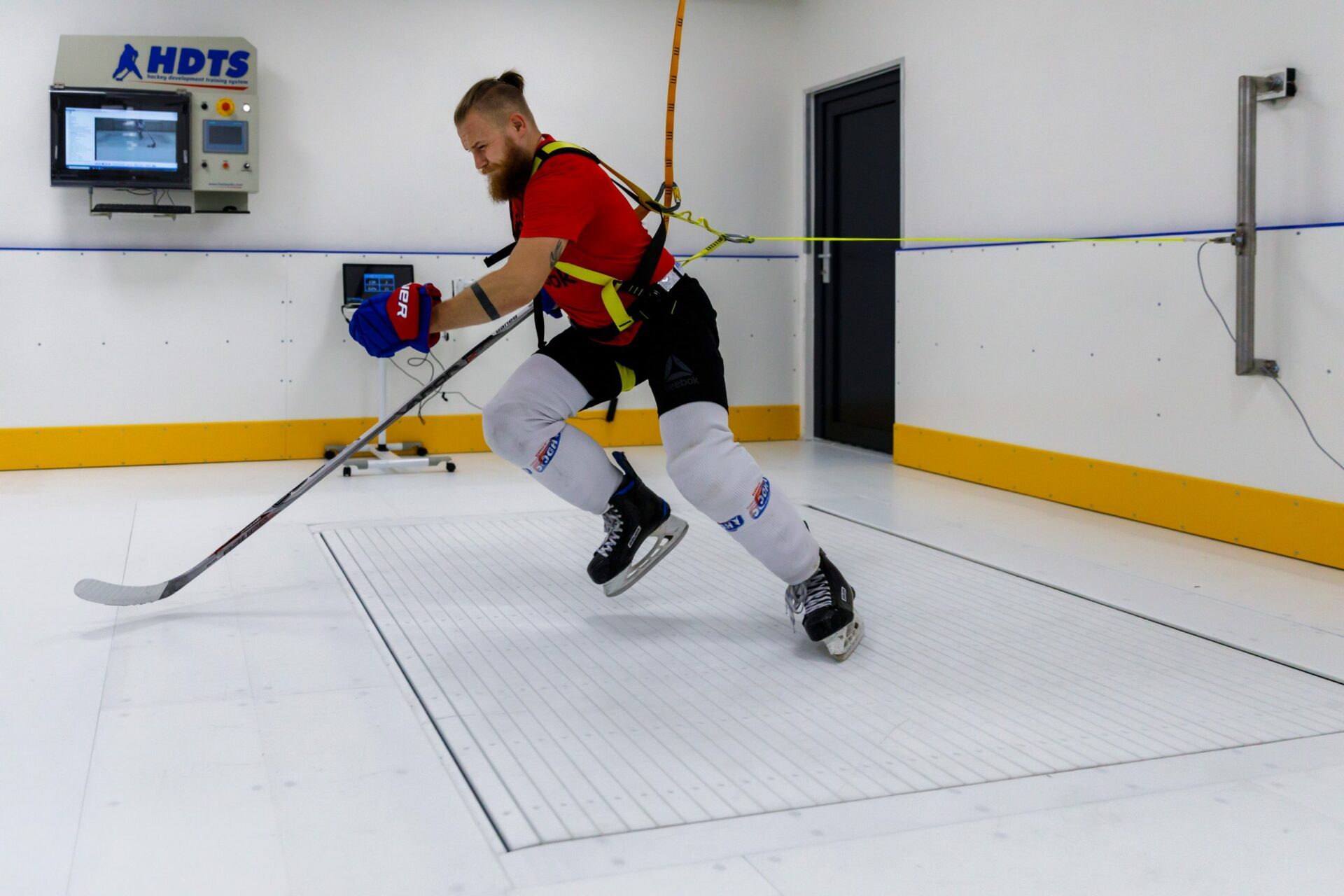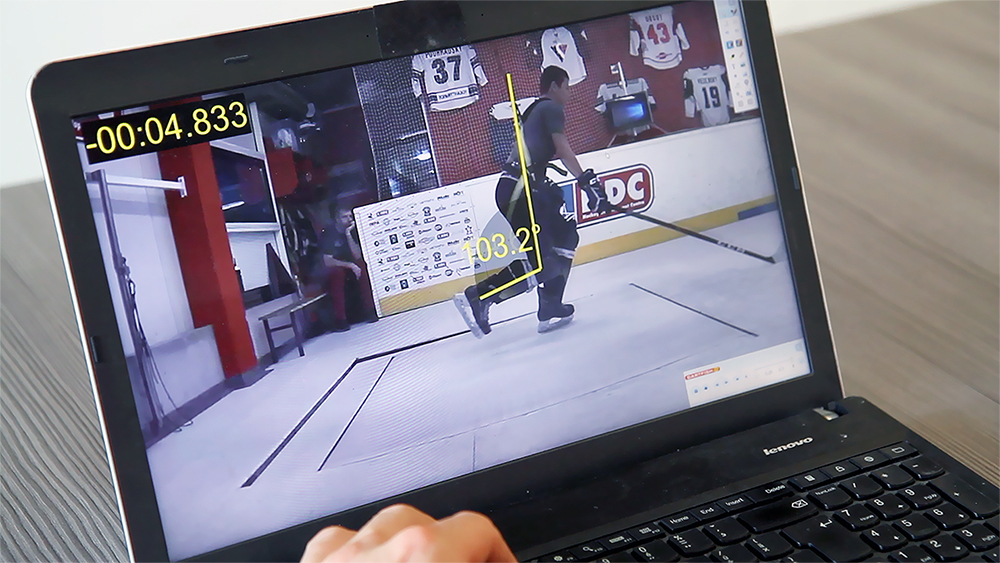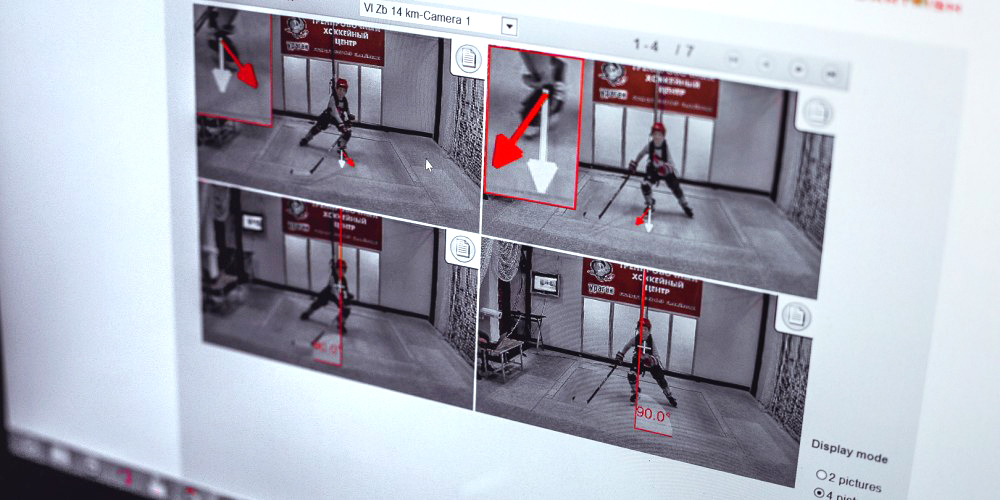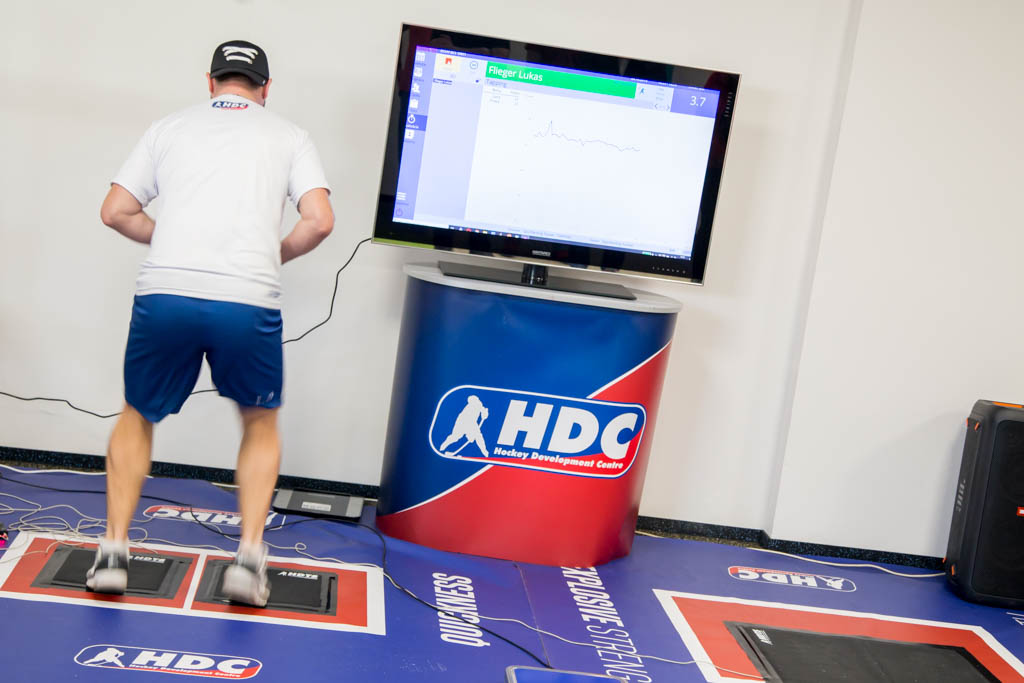Who is the program for?
HDC Diagnostics Program represents a series of special diagnostics tests based on which we determine the strengths and / or weaknesses of the athlete affecting his sports performance. Based on the results and their interpretation, we then create an individual training plan and specific recommendations for training practice for its further development.
Output
Detailed report of the achieved diagnostics results, their interpretation and recommendation for the training process.
Program description
Testing of physical & coordination skills
The diagnosis of general fitness coordination abilities can evaluate the general limiting factors of a player that at most influence his gaming performance on the ice – stride power, explosive force, reaction rate, dynamic and static stability, frequency, velocity and general force (especially in youth). Based on the results and interpretation of the tests, the general readiness of the player is then evaluated and an individual training plan is set up for further development.
BIOMECHANICAL ANALYSIS OF SKATING TECHNIQUE
The skating technique analysis on the skatemill begins with video recording player’s movement during skating from the front and from the side. The electronic software then evaluates the key skating parameters and position of the player (FRONT VIEW – the position of the skate, the position of the support leg, the movement of the arms and the movement of the center of the core, SIDE VIEW – the angle of the leg in the stride, the inner angle of the knee of the support leg, the angle of the ankle at the push) and reveals player’s skating techniques strengths and weaknesses. Based on the comparison of input and output analysis we can trace the skating progress of the player as well as the effectiveness of the training process.
POWERGATE TEST ON THE SKATEMILL
Using the Powergate Test, we find out the special anaerobic performance and the specific stamina of ice hockey player during three ten-second skating intervals. In this way, we can more realistically simulate its physical load during one rotation on ice during a match. The aim is to determine the ability to repeat maximum anaerobic performance without decreasing it. Subsequently, we determine the maximum anaerobic performance, average anaerobic performance as well as the fatigue index between intervals from the results of the Powergate test. Based on the results, players then create an individual training program and recommendations for their training practice.
FMS DIAGNOSIS OF MOTION STEREOTYPES
The basis of FMS diagnostics is 7 functional movement tests that readily identify functional movement restrictions, muscle imbalance, body asymmetry, or other human body imbalances, and can lead to health problems and injuries. The results of individual tests are sorted, precisely scored, and then the client is designed accurate corrective compensatory exercises or medical procedures that thoroughly and mechanically renovate the correct motion patterns. Testing easily identifies dangerous motion patterns that can be clearly labeled and, thanks to accurate scoring, immediately after retesting the improvement result to the desired phenomenon.
ANTHROPOMETRIC ANALYSIS OF HUMAN BODY
With the help of a special measurement we find out the selected anthropometric parameters:
body height & weight, muscle mass percentage, percentage of subcutaneous and visceral fat, metabolic age, basal metabolic consumption, bone mass, body water, BMI.
WINGATE WHEEL TEST (OPTIONAL)
Using the Wingate Isokinetic Round Test, we determine the general anaerobic performance and endurance of ice hockey player over a thirty second load. Subsequently, the Wingate test results in a maximum anaerobic performance within thirty seconds, average anaerobic performance within thirty seconds as well as fatigue index (decrease in time in %). Based on the results, players then create an individual training program and recommendations for their training practice.
TRAINING PLAN
Based on the results and interpretation of these diagnostics tests we create for the players an individual training plan in printed form and then formulate recommendations for training practice for its further development.





